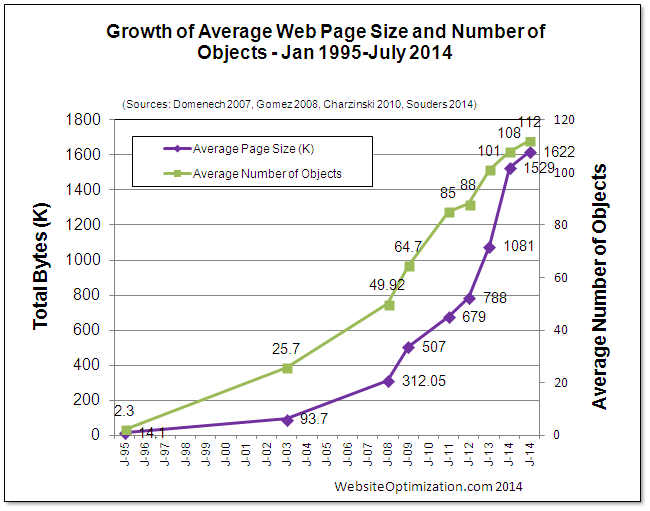Free online 'Web Bloat Scores' encourage overweight pages to slim down


Everyone knows that most of today's web pages are overweight, but there's no way to measure the amount of bloat. Yes, you can easily check the total size of the download, but that doesn't tell the whole story. For example, Google's search results page is bloated even though it is quite small - it's grown from around 10K to 464K - but a page full of pictures may not be bloated, even if it consumes several megabytes.
Željko Švedić has offered a solution to the problem with a website that provides a simple page bloat score. It's a simple idea. The Web Bloat Score (WebBS) compares the page download size with the size of an image of the page in png format. (Scores would be much worse if Švedić had used lossy jpegs instead.)
Since web pages are simply marked-up text, they should only take up a few kilobytes. In fact, there used to be an annual competition for web pages that used 5K or less. However, the average page size reached 93.7K in January 2003, according to WebsiteOptimization.com, and it exploded to 1,622K in January 2014. (See Average Web Page Breaks 1600K)
Today, 3MB and even 5MB pages are quite common, even on sites that appear to be text-based.
Basically, a non-bloated page should score less than 1, and scores of less than 0.5 are certainly achievable. Tim Berners-Lee's about page at the W3C - one of Švedić's examples - scores 0.204. Bloated web pages score higher, with Google's SERP coming in at 7.38.
There are lots of obvious reasons for bloating. These include interactive page elements, JavaScript libraries, and the whole analytics infrastructure for tracking users and serving them advertisements. Taken too far, of course, this bloating can lead to users blocking ads and trackers, even when they appreciate that free websites can't survive without them.
Švedić ran into the bloatware problem himself. As co-founder of TestDome.com - a company that provides automated testing of programming skills - he noticed that its home page was taking longer to load. It has now been reduced to 500K and a WebBS score of 5.78. This still isn't particularly good, but TestDome has problems with Google Analytics and other things loaded from third-party websites. "In the end," he says, "we're a start-up, and there are more urgent tasks than hand-coding our homepage."
Švedić was also inspired by Maciej Cegłowski's brilliant talk on The Website Obesity Crisis at last year's Web Directions conference in Sydney. This keynote is also available on video.
Initally, Švedić floated his WebBS idea in parodic form in Web bloat solution: the PXT Protocol. He pointed out that the web was based on marked-up text (HTML) but it could use the Pixel Transfer Protocol, instead. Sending pages as images would solve all the current problems of page size, speed, security and support. (Well, what could go wrong?)
You'd have thought the proposal was so obviously silly that nobody would take it seriously. But they did.
Although WebBS is a bit of a joke, it does have a serious point. If your web page takes up 3x or 5x or even 10x more space than a png snapshot, you can probably reduce its size without doing a huge amount of work.
This will lead to faster downloads, fewer abandoned page loads, more responsive pages, and, in the long run, more users.
Everyone would be happier if more sites cut their WebBS.